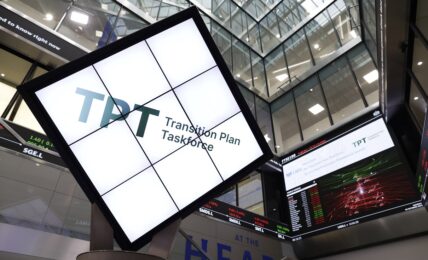By: Maria Patschke, CEO of ESG Solutions, SAP Fioneer
In today’s rapidly evolving landscape of EnvironmentalEnvironmental criteria consider how a company performs as a steward of nature. More, SocialSocial criteria examine how it manages relationships with employees, suppliers, customers, and the communities where it operates. More, and GovernanceGovernance deals with a company’s leadership, executive pay, audits, internal controls, and shareholder rights. More (ESG) reporting, organisations face a myriad of challenges. With increasing regulatory oversight and the introduction of new directives such as the Corporate Sustainability Reporting Directive (CSRD), companies are under more pressure than ever to produce comprehensive and accurate ESG reports. These challenges range from managing data availability and quality to dealing with data fragmentation and ensuring the accuracy and consistency of their reports.
Amidst these complexities, embracing AI technologies offers a robust solution, empowering organisations to enhance the precision, efficiency and comprehensiveness of their ESG reporting practices. But how can AI be used in the context of regulation and auditability and where can it exert the most significant impact? Here are three key areas where AI can transform ESG reporting.
1. Streamlining Data Collection and Analysis
One of the primary challenges in ESG reporting is the sheer volume and variety of data that organisations must manage. Data sources can be diverse, including everything from internal company records to external databases and third-party reports. This diversity often leads to data fragmentation, where critical information is scattered across different systems and formats, making it difficult to match, compile and analyse.
AI can significantly streamline the data collection and analysis process. Through machine learning algorithms and natural language processing (NLP), AI can automate the extraction of insights from vast datasets related to ESG metrics. These technologies can sift through large volumes of unstructured data, such as annual reports, news articles and regulatory filings, to extract relevant information and convert it into structured formats.
For instance, AI can automatically identify and categorise ESG-related data points from various sources, reducing the time and effort required for manual data entry and analysis. Furthermore, matching business partners (borrowers, investees) with the right sector code (e.g. NACE) for emission factors is highly time-consuming and can be assisted by AI. This automation enhances efficiency and minimises the risk of human error, leading to more accurate and reliable ESG reports. AI can also continuously monitor data sources, ensuring that information remains up-to-date and reflects the latest developments in real-time.
Asking AI for your company’s NACE code might return 62.01, indicating ‘Computer programming activities.’ An analyst manually searching might struggle to find a better classification. Now, imagine doing this manually for over 1,000,000 loans in your portfolio.
2. Identifying Patterns and Trends
Beyond just collecting data, AI algorithms can identify patterns and trends within ESG data that might not be immediately apparent to human analysts. This ability to uncover hidden insights can provide organisations with a deeper understanding of their ESG performance and highlight areas for improvement.
AI can analyse historical data to detect correlations between different ESG factors, such as the relationship between energy consumption and carbon emissions. By identifying these patterns, organisations can gain valuable insights into the underlying drivers of their environmentalEnvironmental criteria consider how a company performs as a steward of nature. More impact and take proactive steps to address them. Additionally, AI can help companies benchmark their ESG performance against industry peers, providing a clearer picture of where they stand in comparison to their competitors.
This pattern recognition capability also extends to socialSocial criteria examine how it manages relationships with employees, suppliers, customers, and the communities where it operates. More and governanceGovernance deals with a company’s leadership, executive pay, audits, internal controls, and shareholder rights. More aspects of ESG. AI can analyse employee feedback, customer reviews and stakeholder communications to gauge sentiment and identify emerging issues. By staying ahead of these trends, organisations can respond more effectively to stakeholder concerns and improve their overall ESG performance.
An example would be asking AI for the latest Green Bonds and a list of companies where the proceeds could be effectively used.
3. Enabling Predictive Analytics
One of the most transformative applications of AI in ESG reporting is its ability to power predictive analytics. By leveraging historical data and advanced algorithms, AI-powered predictive analytics can forecast future sustainability outcomes, empowering businesses to proactively address environmentalEnvironmental criteria consider how a company performs as a steward of nature. More and socialSocial criteria examine how it manages relationships with employees, suppliers, customers, and the communities where it operates. More challenges before they escalate.
Predictive analytics can help organisations anticipate potential risks and opportunities related to ESG factors. AI can predict the impact of climate change on a company’s operations, supply chain and market demand. By understanding these potential scenarios, businesses can develop strategies to mitigate risks and capitalise on opportunities, ensuring long-term sustainability and resilience.
Additionally, predictive analytics can inform decision-making at both strategic and operational levels. AI can forecast the outcomes of different sustainability initiatives, allowing companies to prioritise the most effective actions. This capability not only enhances strategic planning but also supports continuous improvement by providing ongoing insights into the effectiveness of ESG initiatives.
For example, by supplying AI with your company’s current CO2e footprint and asking for strategies to achieve net zero, you can receive precise, industry-tailored recommendations.
The Future of Reporting Powered by AI
By harnessing the power of AI, organisations can overcome the challenges of ESG reporting, enhance their reporting practices and ultimately achieve more sustainable and responsible business outcomes. As regulatory requirements continue to evolve and stakeholder expectations rise, AI technologies will be crucial for companies seeking to stay ahead in the ESG landscape. With AI as a powerful ally, the future of ESG reporting looks more efficient, accurate and impactful. If you deploy AI in a secure environment and define regulatory-compliant use cases, you can start benefiting immediately.



